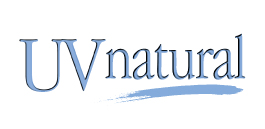by Serpone, Nick; Salinaro, Angela; Emeline, A..
Proc. SPIE Vol. 4258, p. 86-98, Nanoparticles and Nanostructured Surfaces: Novel Reporters with Biological Applications, Catherine J. Murphy; Ed.
Publication Date: 06/2001
Origin: SPIE
Abstract Copyright: (c) 2001 SPIE–The International Society for Optical Engineering. Bibliographic Code: 2001SPIE.4258…86S
Abstract
Sunlight can have deleterious effects on humans: causes sunburns and is the principal cause of skin cancers. Usage of TiO2 (and ZnO) in sunscreen lotions, widely used as UVA/UVB blockers, and intended to prevent sunburns and to protect consumers from skin cancers (carcinomas and melanomas) is examined. Although used to mineralize many undesired organic pollutants, TiO2 is considered to be a safe physical sunscreen agent because it reflects and scatters both UVB (290-320 nm) and UVA (320-400 nm) sunlight; however, it also absorbs substantial UV radiation which, in aqueous media, yields hydroxyl radial ((DOT)OH) species.
These species cause substantial damage to DNA (J. Photochem.Photobio.A:Chem.,111(1997)205). Most importantly, sunlight-illuminated sunscreen TiO2 particles catalyze DNA damage both in vitro and in human cells (FEBS Letters, 418 (1997)87). These results raise concerns on the overall effects of sunscreens and raise the question on the suitability of photoactive TiO2 as a sunscreen component without further studies. The photocatalytically active nature of these metal oxides necessitates some changes since even the TiO2 specimens currently used in suncreams cause significant DNA strand breaks.
